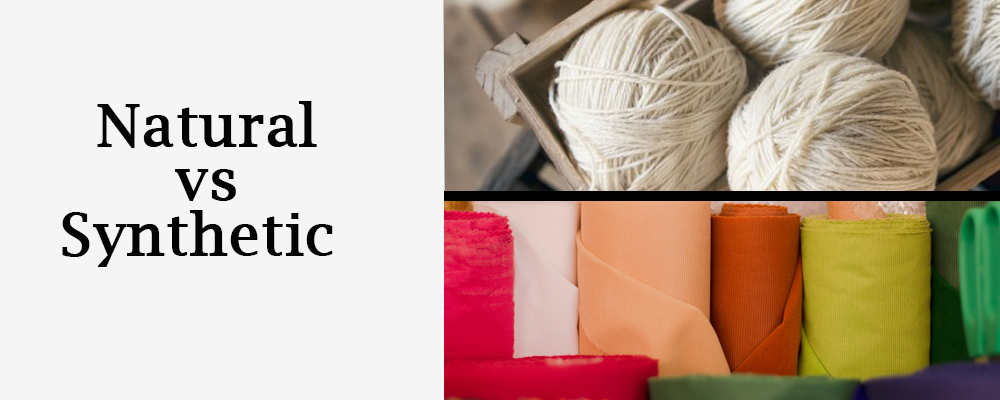In the expansive realm of fabrics, the origin and style of different synthetic and natural fibers significantly influence their characteristics, usage, and environmental footprint.
In general terms, fibers can be classified into natural and synthetic styles. Each style presents its unique set of pros and cons, molded by its source, treatment, and final use. Let’s delve into the difference between synthetic and natural fibers.
The following are the difference between synthetic and natural fibers :
Table of Contents
1. Origin of Fibers:
Natural Fibers: As the name suggests, natural fibers are sourced directly from nature. They are obtained from plants, animals, or minerals. Some of the most popular natural fibers include:
- Cotton (derived from cotton plants)
- Wool (sourced from sheep)
- Silk (produced by silkworms)
- Linen (from the flax plant)
Synthetic Fibers: These are man-made and are produced through intricate chemical processes. Many of them have their roots in petrochemicals. Common synthetic fibers include:
- Nylon
- Polyester
- Acrylic
- Rayon (semi-synthetic, as it’s derived from naturally occurring cellulose but processed using chemicals)

2. Properties:
Natural Fibers:
- Highly biodegradable.
- Often offer better breathability, making them comfortable in warmer climates.
- Susceptible to environmental factors like moisture, mold, and pests.
- Some (like wool and silk) provide excellent insulation.
Synthetic Fibers:
- Highly durable and resistant to environmental wear and tear.
- Wrinkle-resistant and maintain shape over time.
- Can be susceptible to melting under high temperatures.
- Can be custom-engineered for specific properties, e.g., UV protection or moisture-wicking capabilities.

3. Production and Environmental Impact:
Synthetic Fibers: The manufacturing processes can be energy-intensive and polluting. They are typically less biodegradable, which poses challenges in waste management. Notably, synthetic fibers contribute to microplastic pollution in water bodies when they shed during washing.
Natural Fibers: Their biodegradability makes them environmentally friendly in terms of disposal. However, the cultivation of some natural fibers, especially cotton, can be resource-intensive, consuming vast amounts of water and often relying on pesticides.

4. Economic Implications:
Natural Fibers: Their cost can be variable. Factors like cultivation methods, yield, and market demand play a role. Traditionally luxurious fibers like silk tend to be on the pricier side.
Synthetic Fibers: Generally more consistent in price and often cheaper to produce in bulk. However, they are influenced by the fluctuating costs of petrochemicals.

5. Applications:
Natural Fibers: Predominantly found in clothing and home textiles but also have niche applications in industries, given their specific properties.
Synthetic Fibers: Their resilience and versatility have led to a broader range of applications—from everyday clothing to automotive interiors, outdoor gear, and more.
Conclusion
Picking between man-made and natural materials usually depends on what you need for a project, how much money you can spend, and thinking about the environment.
Nowadays, many clothes use a mix of both kinds of materials to get the best of both. As people care more about the environment, clothing makers are trying to make things in a way that’s good for nature but still useful.

